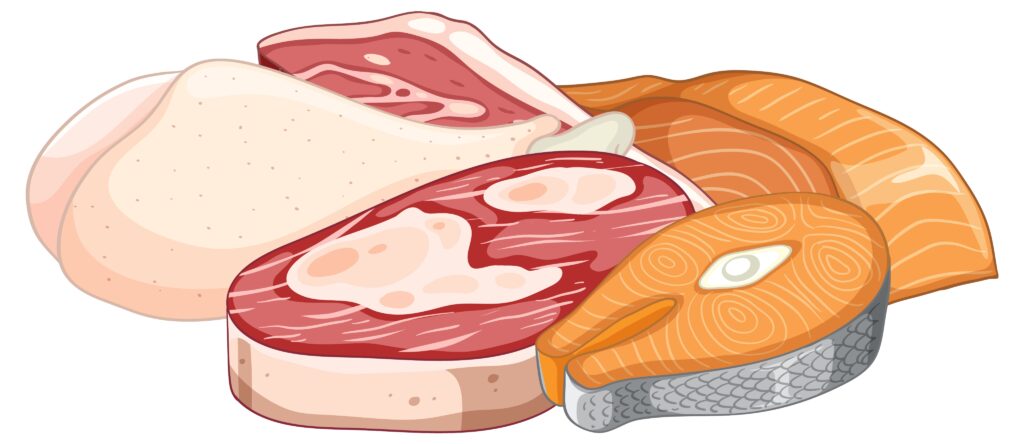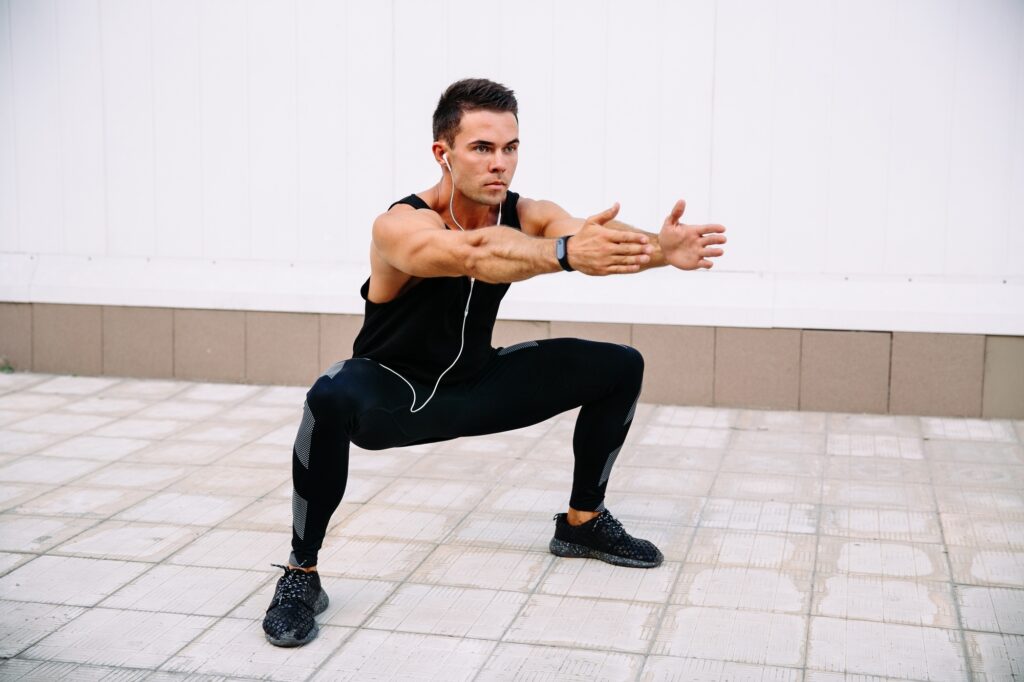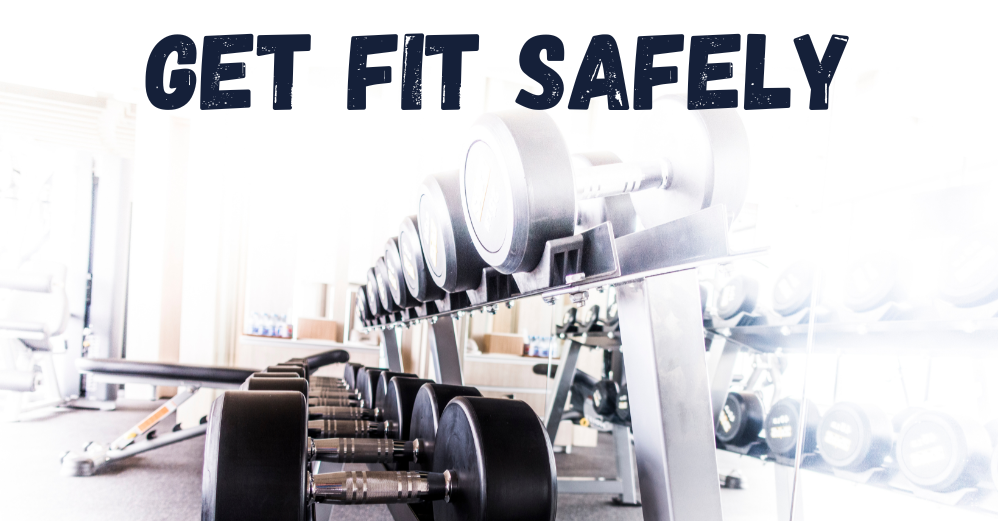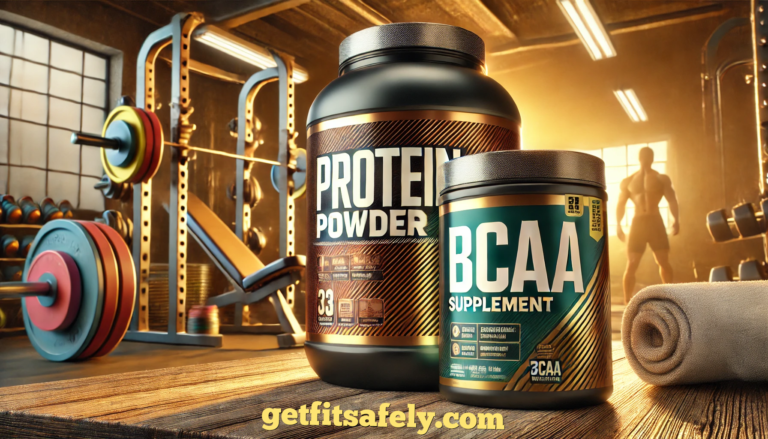You want to build muscle, but the idea of hitting a crowded gym full of buffed-up strangers doesn’t exactly get you excited?
I get it.
The good news is, you don’t need a gym membership to bulk up!
With the right mindset, some basic equipment, and a solid routine, you can start building muscle right from the comfort of your home
Yup, you read that right—no gym required!
But that’s not all.
About 80% of your results come from what you eat.
And guess what?
Around 30% of that should be protein.
Now, listen up!
I’ve always been a big believer in getting all the nutrients we need from whole foods.
But, from my own experience, when we’re not getting enough protein to help muscles recover after tough workouts, that’s where protein powders can step in and save the day.
So, let’s get to it and start building those muscles—right at home.
| Category | Key Tips | Examples/Details |
|---|---|---|
| Home Compound Exercises | Focus on full-body movements that engage multiple muscles. | Squats, Push-ups, Lunges, Plank-to-Push-up, Bicep Curls with water jugs or backpacks. |
| Protein from Whole Foods | Prioritize whole food proteins for muscle growth. | Lean meats, fish, eggs, beans, lentils, Greek yogurt, cottage cheese. |
| Protein Powder | Use as a supplement when protein intake from food is insufficient. | 20-30g post-workout; mix with water or almond milk for quick recovery. |
Whole Food Protein: The OG Muscle Fuel

I remember when I first started training, protein powder was already a thing, but I didn’t jump on that train right away.
I stuck to whole foods—chicken, eggs, and all the good stuff.
And honestly, I saw some great results.
Whole foods really do the job when it comes to building muscle, and they bring along a bunch of other nutrients your body needs to stay healthy and strong.
These classic staples were—and still are—loaded with the protein your muscles need to grow.
Think about it: back in the day, there were no fancy shakes or powders.
Bodybuilders got swole by eating real food and lifting heavy.
And guess what?
It worked!
So while protein powder is super convenient (and tastes great in a smoothie), it’s not essential for building muscle.
You can still get jacked with a solid diet full of protein-rich foods.
But listen, if you’re short on time or need a quick fix post-workout, protein powder is a solid option.
Just remember, before the shakes came along, it was all about solid, old-fashioned meals
And that still works, too!
How Protein Powder Can Take Your Muscle Growth to the Next Level
Let’s start with the basics: protein is key when it comes to muscle building.
It’s the muscle’s fuel, plain and simple.
When I first got serious about working out, I stuck to whole foods—chicken, eggs, the usual.
But honestly, there were days when I just couldn’t deal with cooking another meal.
That’s when protein powder came in clutch.
It made everything so much easier and faster.
Total game changer!
Protein powder is a quick and easy solution when you need that extra boost but don’t feel like cooking another chicken breast.
And no, protein powder isn’t just for meatheads or bodybuilders—it’s for anyone who wants to get stronger, leaner, and healthier.
Toss it in a smoothie, mix it with oats, or just stir it up with water.
It’s that easy.
No blender?
No worries.
Give it a good stir and you’re set!
Home Workouts: The Power of Compound Exercises

The best thing about working out at home?
You set the rules and the vibe.
No waiting for machines or dealing with gym stares.
I used to hate waiting around at the gym, feeling like someone was always watching me.
At home, it’s just me and my playlist—way more comfortable.
You can still get a killer workout with little to no equipment by using compound exercises.
These movements work multiple muscle groups at once, making your workouts more efficient and effective.
Honestly, I’ve found that I get way more done in less time this way.
Here are some must-do compound exercises for building muscle at home:
– Push-ups: This upper body staple targets your chest, shoulders, triceps, and core. Spice it up with variations like diamond push-ups or elevate your feet for an extra challenge.
– Squats: Whether bodyweight or with makeshift weights (think: a backpack full of books), squats fire up your legs, glutes, and core all at once. Keep your chest up and push through your heels.
– Lunges: Fantastic for your legs and glutes, while also working your core for better balance. Add some weight for extra resistance.
– Plank-to-push-up: This dynamic move strengthens your core, shoulders, and arms. Start in a plank position and push up into a push-up for a full-body burn.
Why focus on compound exercises?
They hit more muscles in less time, increase calorie burn, and trigger a greater release of growth hormones, all essential for muscle growth.
Plus, they build functional strength—useful for real-life tasks like carrying groceries or lifting heavy stuff around the house.
Incorporate these movements into your routine, stay consistent, and watch your progress take off—all without ever leaving the house.
Building Muscle with Resistance Bands: Your Home Workout Secret Weapon

Think you need heavy weights to build muscle?
Nah, not really.
Resistance bands are the real deal, and they’re perfect for your home workouts.
I’ve used them myself, and trust me, they’re more powerful than they look.
Here’s why they’re a total game-changer:
– Portable and Cheap: They take up no space, you can stuff them in a drawer, and they’re way cheaper than a set of dumbbells.
– Constant Tension: Unlike weights, bands give your muscles tension the whole time. You’ll feel the burn from start to finish. Hello, gains!
– For All Levels: Whether you’re just starting out or have been at it for a while, resistance bands work for everyone. Just switch up the band thickness or adjust the length to make it harder (or easier).
Here’s a few killer moves to get you started:
– Band Squats: Step on the band, hold the handles by your shoulders, and squat like you mean it. Killer for your legs and glutes.
– Chest Press: Anchor the band behind a sturdy object (or door) and press forward like you’re bench pressing. Boom—chest and shoulders on fire!
– Band Rows: Wrap it around something solid and pull the handles toward you, just like a row at the gym. Your back and arms will thank you later.
– Bicep Curls: Step on the band and curl it up like dumbbells. Feel those biceps working overtime.
– Lateral Band Walks: Loop the band around your legs, just above your knees, and take small side steps. Get ready for those glutes to burn.
The trick?
Progressive overload.
As you get stronger, switch to thicker bands or add more reps.
Keep pushing your limits.
Resistance bands are no joke.
Keep at it, and you’ll be building muscle and getting stronger in no time—all from the comfort of your home.
Forget the gym, you’ve got this!
Timing Your Protein Right
Here’s the thing: Protein powder is a game changer, but only if you time it right.
Downing a shake immediately after a workout?
That’s money.
Your muscles are crying for nutrients, and you come to the rescue with a delicious protein shake.
Trust me, it makes all the difference.
Need a quick recipe?
Try this:
– 1 scoop protein powder
– 1 banana (for some natural sweetness)
– A handful of spinach (you won’t taste it, promise)
– Almond milk or water
– A spoonful of peanut butter
Blend it up, drink it down, and feel the muscle magic happen.
Don’t Forget the Carbs and Hydrate Like a Pro!
Alright, protein might be the star of the muscle-building show, but don’t sleep on carbs!
Seriously, carbs are your workout fuel.
Without them, you’ll feel like you’re running on empty, and your workouts will suffer.
I remember once when I tried to cut carbs before a workout, thinking it would make me leaner.
Big mistake!
I barely made it through half the session before I felt completely drained.
Lesson learned—carbs are essential if you want to perform at your best.
And yes, carbs after your workout are just as important!
After you crush a workout, your body needs to recharge its energy, and that’s where carbs come in.
Think rice, sweet potatoes, or even a banana—these guys help your muscles recover faster and get you ready for the next session.
Now, let’s not forget about water.
Hydration is everything.
If you’re not drinking enough, your muscles—and your energy—are going to feel it.
Dehydration can sneak up on you fast, so make sure you’re sipping water all day, especially before, during, and after your workout.
I always keep a big water bottle with me because once you get dehydrated, it’s hard to recover quickly.
Rest Days Aren’t Lazy Days
One of the biggest mistakes I see people making?
Not giving their muscles time to rest and grow.
Yep, rest days are just as important as workout days!
It’s during rest and recovery that those fibers repair and grow back stronger.
So, don’t skip sleep and make sure you’re taking those rest days seriously.
Progressive Overload: The Key to Continuous Muscle Growth
If there’s one thing to remember about building muscle, it’s this: **progressive overload**.
It’s a fancy term, but don’t worry—it’s pretty simple.
The concept is that, over time, you need to gradually increase the demand on your muscles to keep seeing growth.
It took me a while to figure this out—when I first started, I did the same exercises over and over, and guess what?
My progress hit a wall. Once I figured out how to increase the challenge, things started moving again.
Here’s how you can apply progressive overload at home:
– Add More Weight:If you started squatting with bodyweight, eventually you’ll want to increase the load.
Use household items like water jugs, backpacks, or anything heavy to add resistance.
The heavier you go (safely), the more your muscles will respond.
– Increase Reps or Sets: If you’re doing 3 sets of 10 push-ups and they start feeling easy, it’s time to increase either the number of reps or sets.
Pushing yourself just a little more each time forces your muscles to adapt and grow.
– Change the Tempo: Slow down your reps.
Instead of banging out 10 fast push-ups, try lowering yourself down slowly and holding for a count of 3.
This makes your muscles work harder and increases the tension.
– Shorten Rest Time: Another way to challenge your muscles is by reducing the amount of rest you take between sets.
This keeps your muscles under tension longer, promoting growth.
– Vary the Exercises: Your muscles can get used to doing the same exercises over time, so mix it up!
If you’ve been doing regular push-ups, try variations like diamond push-ups, incline push-ups, or even explosive clap push-ups.
Similarly, for squats, switch to jump squats or sumo squats.
These variations help target different parts of the muscle and keep your body challenged.
Progressive overload is all about making sure you’re constantly challenging your muscles, even when working out at home.
Keep pushing, keep growing.
Final Thoughts
Here’s the real deal: Building muscle takes time.
I used to get anxious when I didn’t see results right away, but the truth is, there’s no magic pill (or powder) that’ll get you there overnight.
So, here’s the takeaway: Who says you need a gym to get ripped?
With a little creativity and a balanced diet (it’s not all about protein), you can start building muscle right from home.
No excuses!
FAQS:
Will Eating More Protein Make Me Bulkier?
Nope, just eating more protein won’t make you huge. Protein helps build muscle, but only if you’re also lifting weights and eating the right amount of calories. If you’re not putting in the work, extra protein won’t bulk you up—it’s all about balance!
Do I Really Need Protein Powder to Build Muscle?
Not necessarily! You can get plenty of protein from whole foods like chicken, eggs, and beans. Protein powder is just a convenient option if you’re struggling to hit your daily protein goals.
How Much Protein Should I Have for Muscle Growth?
Aim for about 0.7 to 1 gram of protein per pound of body weight. So, if you weigh 150 pounds, you should aim for around 105-150 grams of protein daily, depending on your goals.





